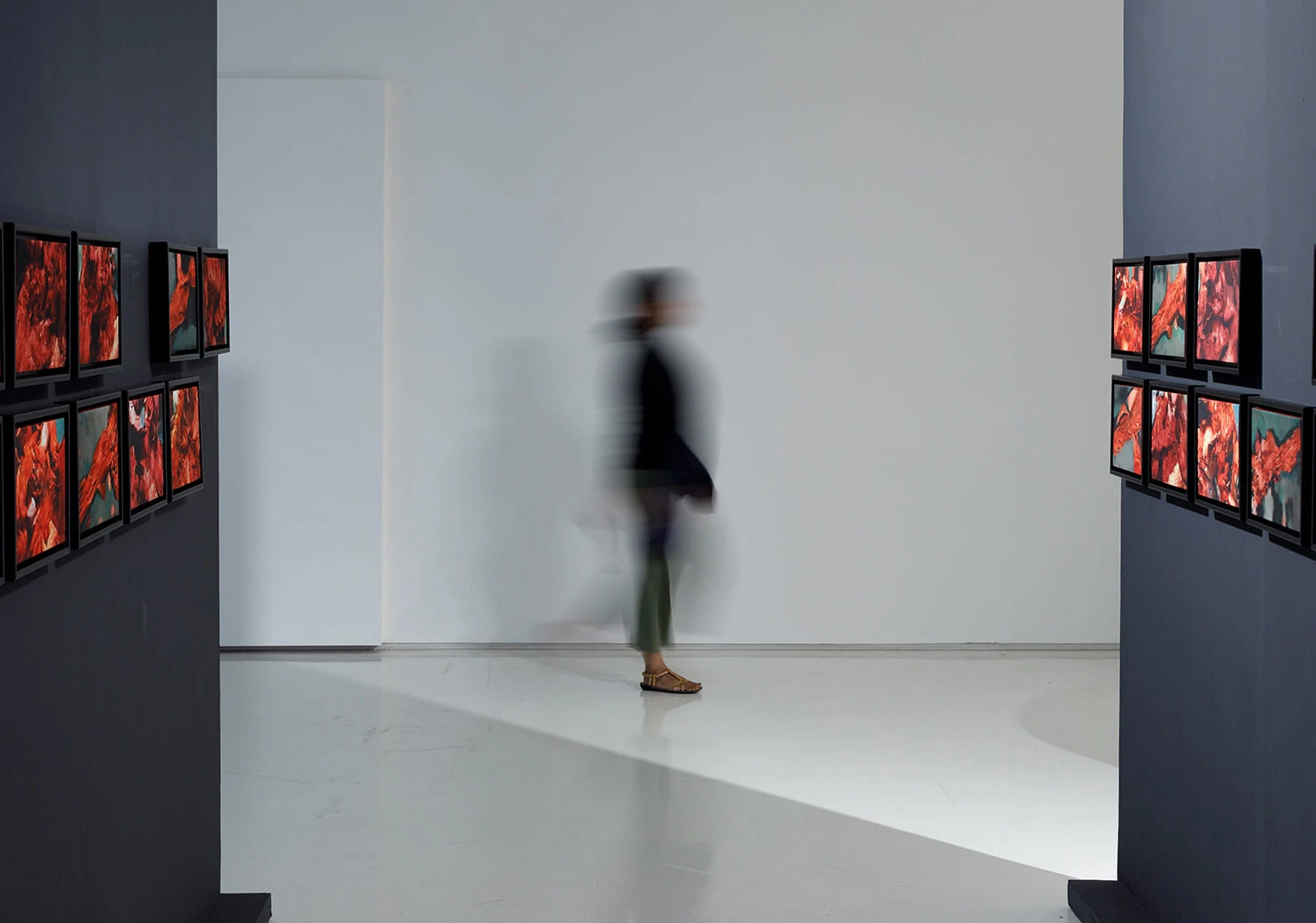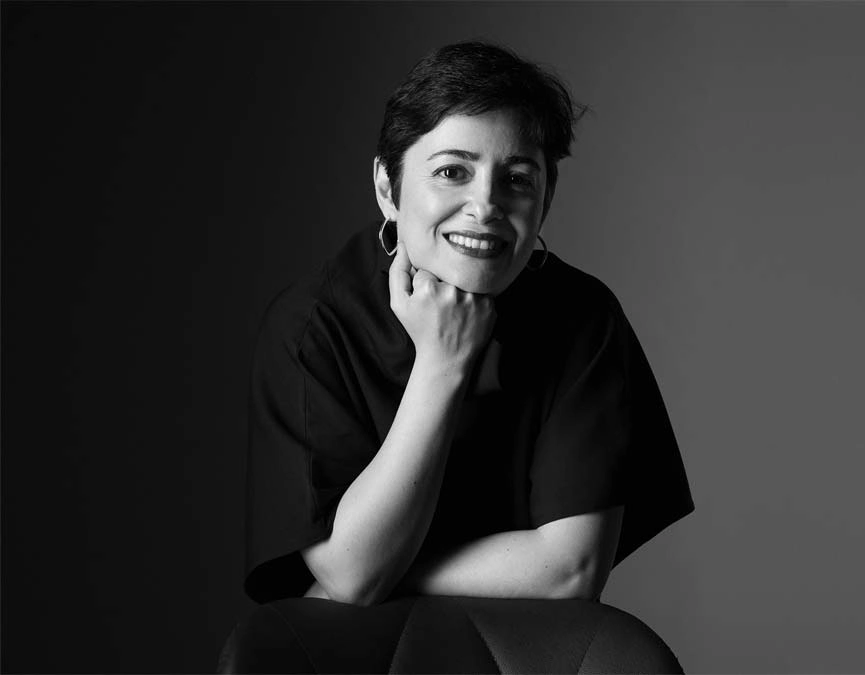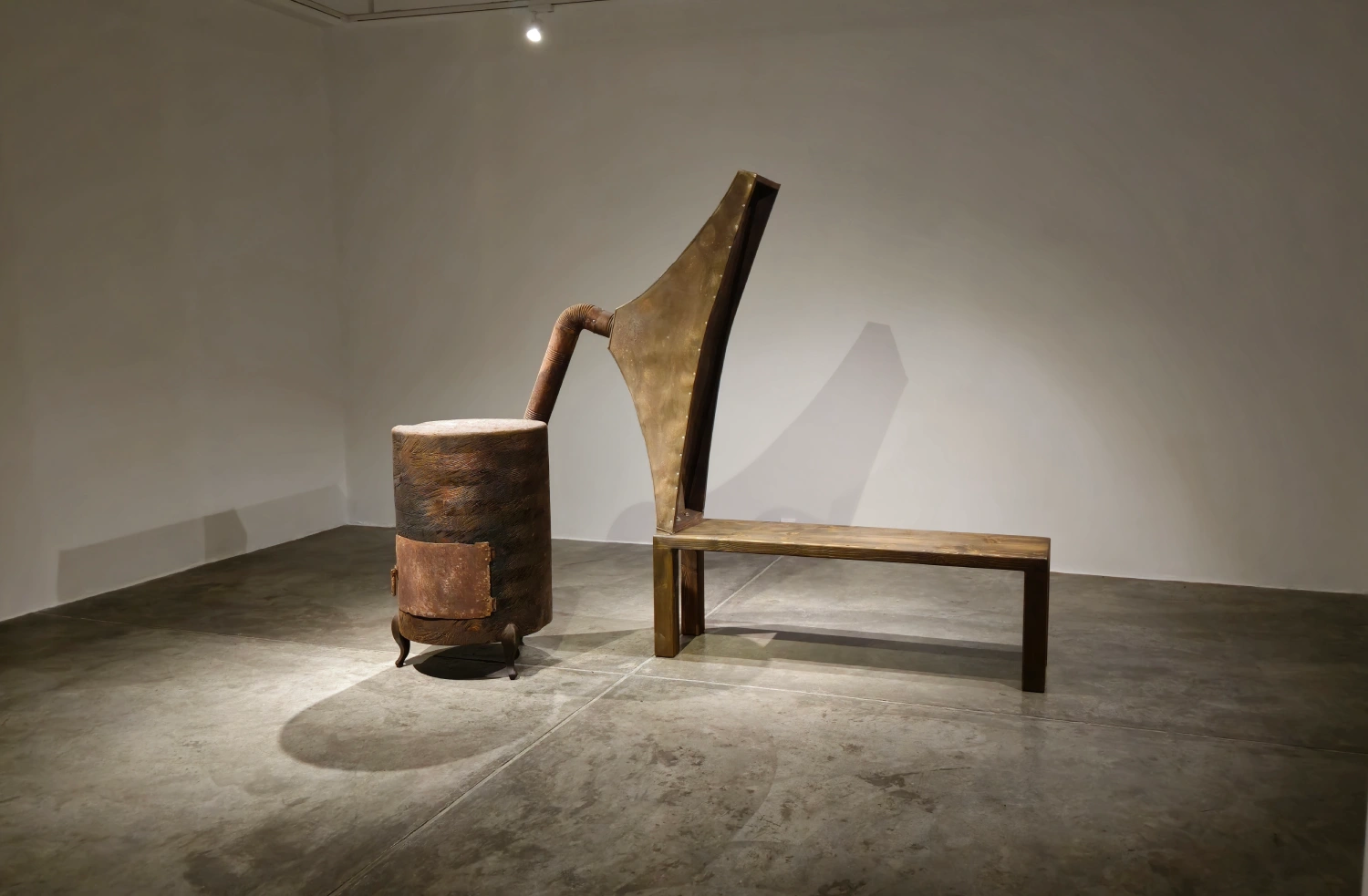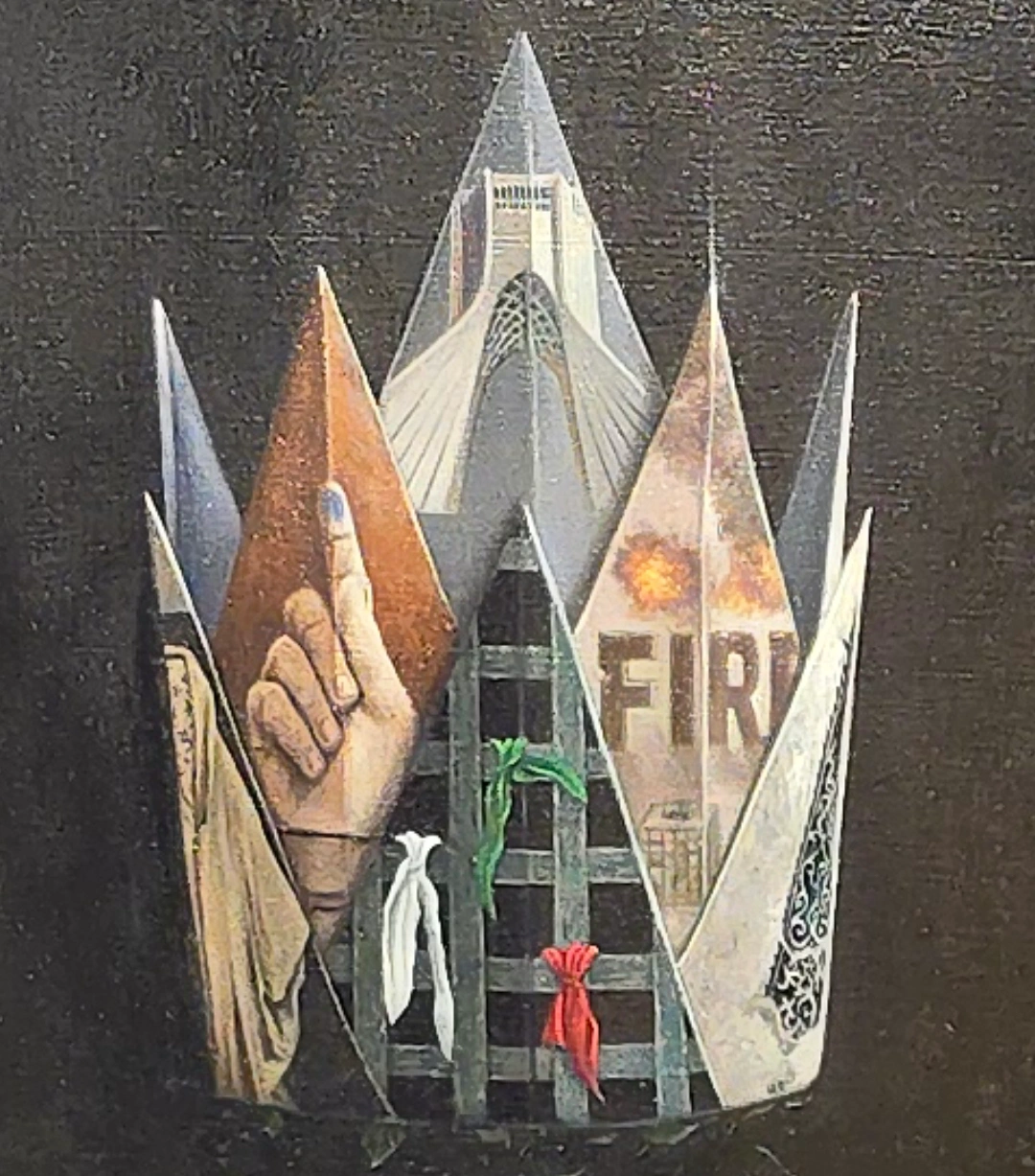The Punctums in the Paintings of wahed Khakdan
Wahed Khakdan, a painter and illustrator born in 1950 in Tehran, creates works that evoke magical realism through his enigmatic, photorealistic depictions of objects and figures. His artistic formation began in childhood under the guidance of his father.
Traces of Nostalgia in the Painter's Motifs
After an initial phase of abstract experimentation, Khakdan embraced surrealism in the early 1970s, debuting his first solo exhibition at Tehran's Seyhoun Gallery in 1974. His oeuvre has been exhibited extensively in Iran, Germany, and the United States. During 1976-1983, he diversified into interior architecture, theatrical set/costume design for film and television, and children's book illustration. The revolutionary period and subsequent war prompted a shift toward social realism with allegorical undertones (Fig 1). Following his relocation to Germany, still-life compositions became his predominant focus.[1] Khakdan's paintings, while employing nostalgic elements and memory-laden atmospheres, transcend mere reminiscence. By disrupting the brain's memory-formation processes through strategic voids and the presentation of historically charged imagery, his work actively deconstructs nostalgia. These canvases achieve temporal liberation-severed from their origins, they emerge fully in the present. [2]
Spatial Composition and Emotional Resonance in the Work
The paintings employ northern light-a lighting technique where color values and contrast transition gradually, best exemplified in Vermeer's works. This treatment lends Khakdan's compositions an almost sacred quality. Beyond the nostalgic patina of earthy tones layered on objects, we encounter elements that transcend their materiality. The artist imbues these objects with added value through his technique, a value derived from personal memories that he seeks to connect with collective memory, thereby preserving his own narrative within history. [3]
The Profound Impact of Migration on the Artist's Visual Language
Migration has fundamentally shaped some of wahed Khakdan's most significant works. Having spent thirty years away from Iran, this lived experience inevitably permeates his artistic vision. Two paintings, The Emmigrant Scarecrow and The Second Emmigrant Scarecrow- articulate this theme with particular clarity. Here, scarecrow figures occupy the lower halves of the compositions, their compressed placement viscerally conveying the weight of displacement (figs 2 & 3). Recurring motifs of shoes, hats, and suitcases trigger the viewer's associations with journeys.
A more symbolic treatment emerges in The Emmigrant Horse, where the artist projects his experience of rootlessness onto childhood toys, suggesting his destiny became inextricably intertwined with migration (fig 4). This anxiety about spatial and identity dislocation compels the artist to forge an independent path-one diverging from contemporary trends. Beneath the technically masterful surfaces and exquisite glazes, these works become therapeutic spaces where the shared anxieties of artist and viewer find resolution, allowing the world to fade into dignified oblivion. [4]
The Enchantment of Imagination
Khakdan openly acknowledges the central role of imagination in his creative process: "Nearly 80% of what you see in my paintings exists only in the mind. I constantly challenge my own imagination, striving to render objects from memory whenever possible. Only when forms prove elusive do I resort to photographs or physical references. Many objects I depict like the red horse I owned at age three, which appears repeatedly in my work-belong to distant memories and no longer exist in reality."[5](fig 4)
In his still-life compositions, Khakdan imbues inanimate objects with human presence. His visual spaces function like a messianic breath across the canvas, screaming the presence of a wandering spirit amidst dead matter. As noted by Shayeghan, the works exhibit a distinctive "new enchantment": "He masterfully weaves together fragments of his scattered presence like a virtuoso painter, yet manages to synthesize his inner landscapes into visions uniquely his own."[6]
The Viewer's Encounter with Punctums
Analyzing Khakdan's oeuvre requires meticulous attention to objects and their symbolic potential. These surrealist spaces resist singular interpretations, rejecting absolute truths while maintaining what Salajegheh identifies as "a profoundly bitter undercurrent in the artist's worldview."[7]
The paintings deliver their meaning with startling profundity, functioning like Barthesian punctums that pierce the viewer's consciousness. Roland Barthes describes the punctum as "that accidental detail which pricks the viewer, establishing an emotional connection with the image".[8] In Khakdan's work, these visual punctums strike like arrows, their final impact shaped by each viewer's lived experience. Barthes further characterizes the punctum as "a traumatic wound that bruises the spectator"[9], precisely the type of painful encounters Khakdan orchestrates through his art.
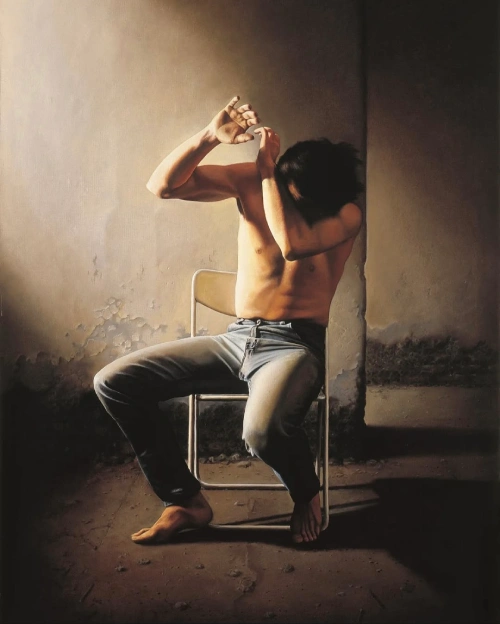
1.Wahed khakdan, Three times hamid, 1987, oil on convas, 120×90 cm.

2.Wahed khakdan, emmigrant scarecrow, 2012, oil on convas.
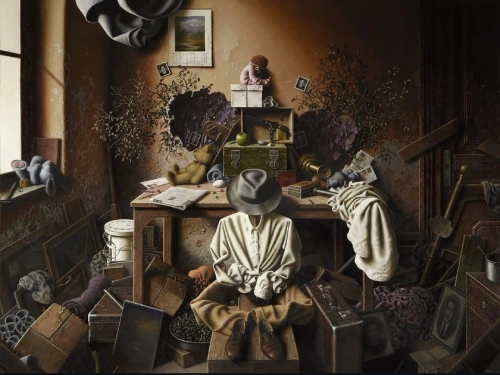
3.Wahed khakdan, the second emmigrant scarecrow, 2021, oil on convas.
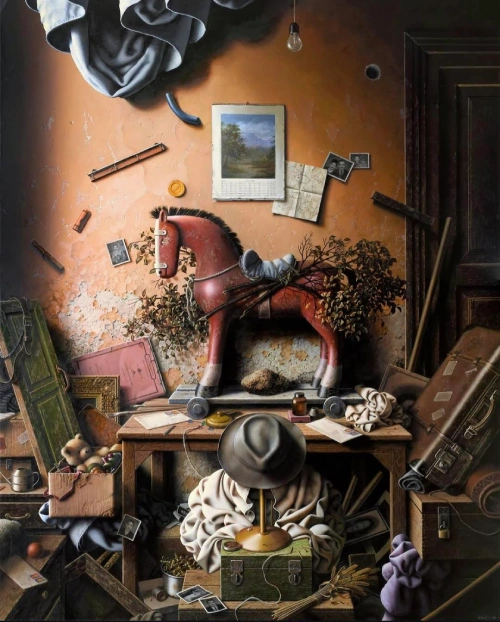
4.Wahed khakdan, emmigrant horse, 2020, oil on convas.
References:
1. Artibition (no date) Wahed Khakdan.
3. Fardmag Fetishism in the Nature of Wahed Khakdan's Still Lifes.
4.Avammag (no date) Exhibition Review: Wahed Khakdan.
5.Asad, Shafagh. (2000) 'Interview with Wahed Khakdan', Tavoos Quarterly, 3 & 4, p. 176. [Original Persian: Shafagh Asad (1379)].
6.Shayegan, Daryoush. (2017) New Enchantment: Fragmented Identity and Nomadic Thought. Tehran: Foruzanmehr. p. 219. [Original Persian: Daryush Shayegan (1396)].
7.Salajegheh, Hassan. (2008) 'Painting: Time, Memory and the Expansion of Destruction (Critique of Wahed Khakdan's Exhibition)', Tandis, 237, p. 8. [Original Persian: Hassan Salajegheh (1387)].
8.Flusser, Vilèm. et al. (2019) Historiography and Photography: Essays on Photography as Historical Document, 2nd edn. Translated and edited by M. Ghafouri. Tehran: Agah. p. 159. [Original Persian: Mohammad Ghafouri (compiler and translator) (1398)].
9.Barthes, Roland. (2001) Camera Lucida: Reflections on Photography. Translated by F. Azarang. Tehran: Mahriz. p. 50. [Original Persian: Roland Barthes (1380)].
Image sources :
